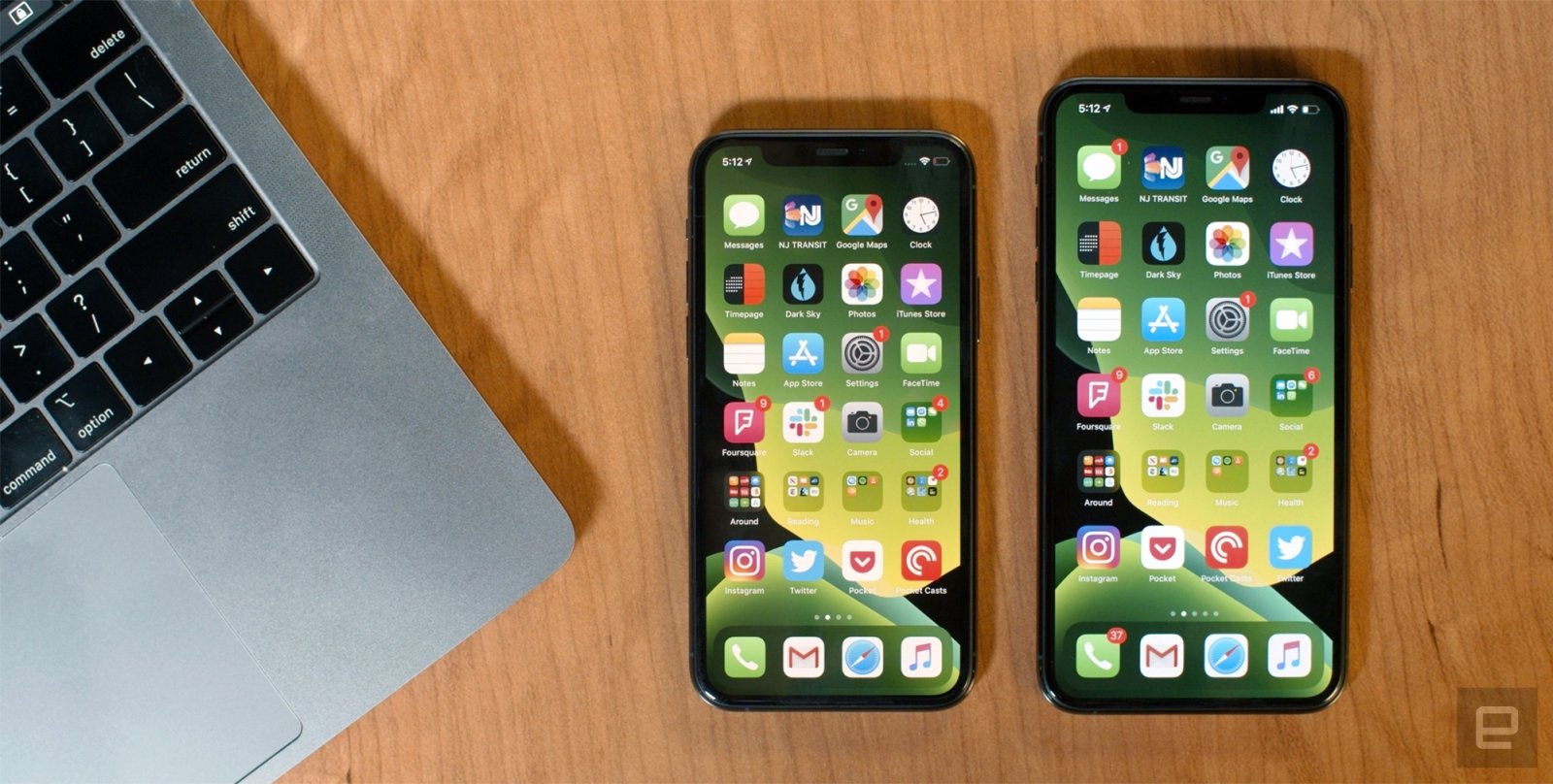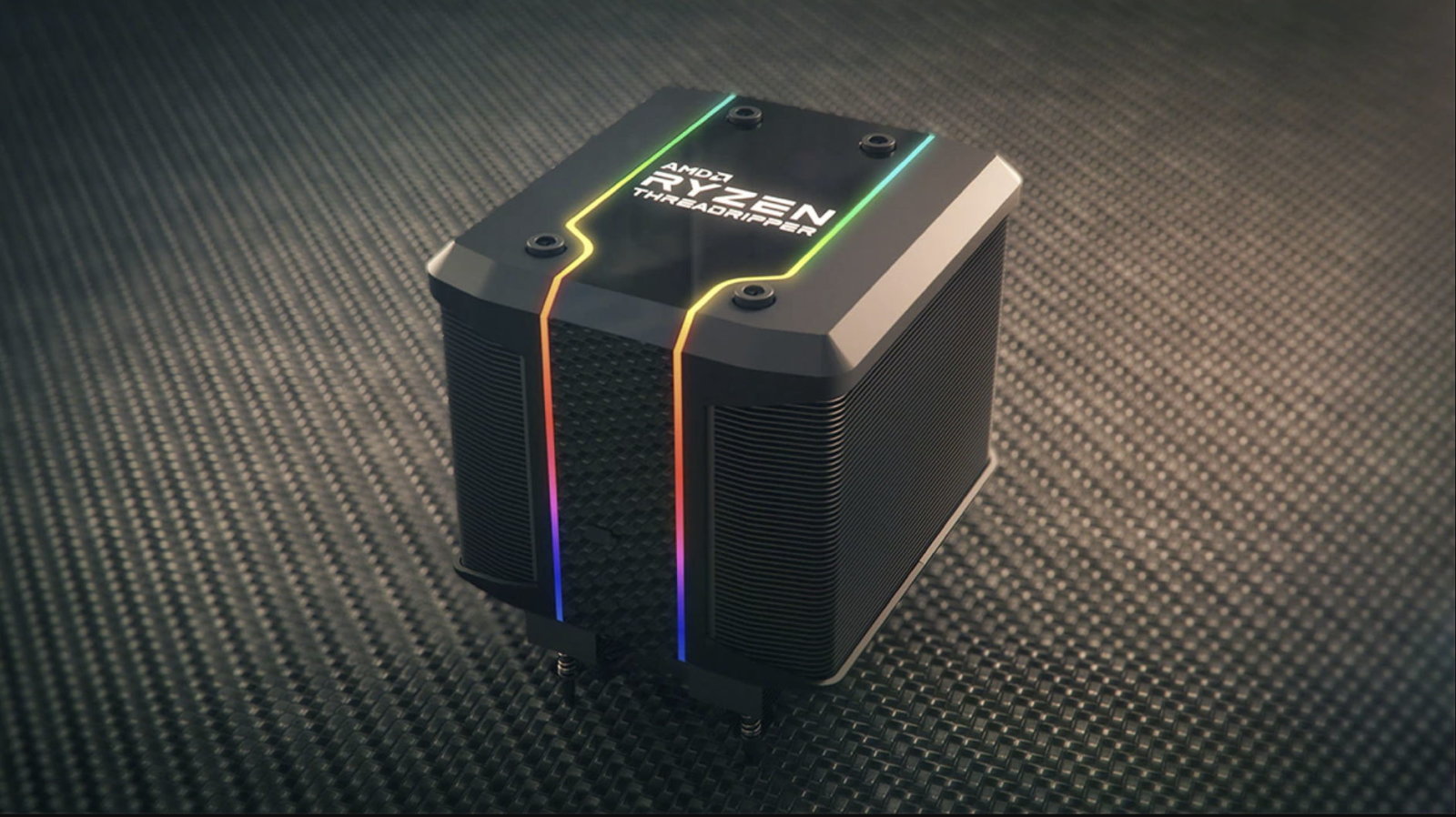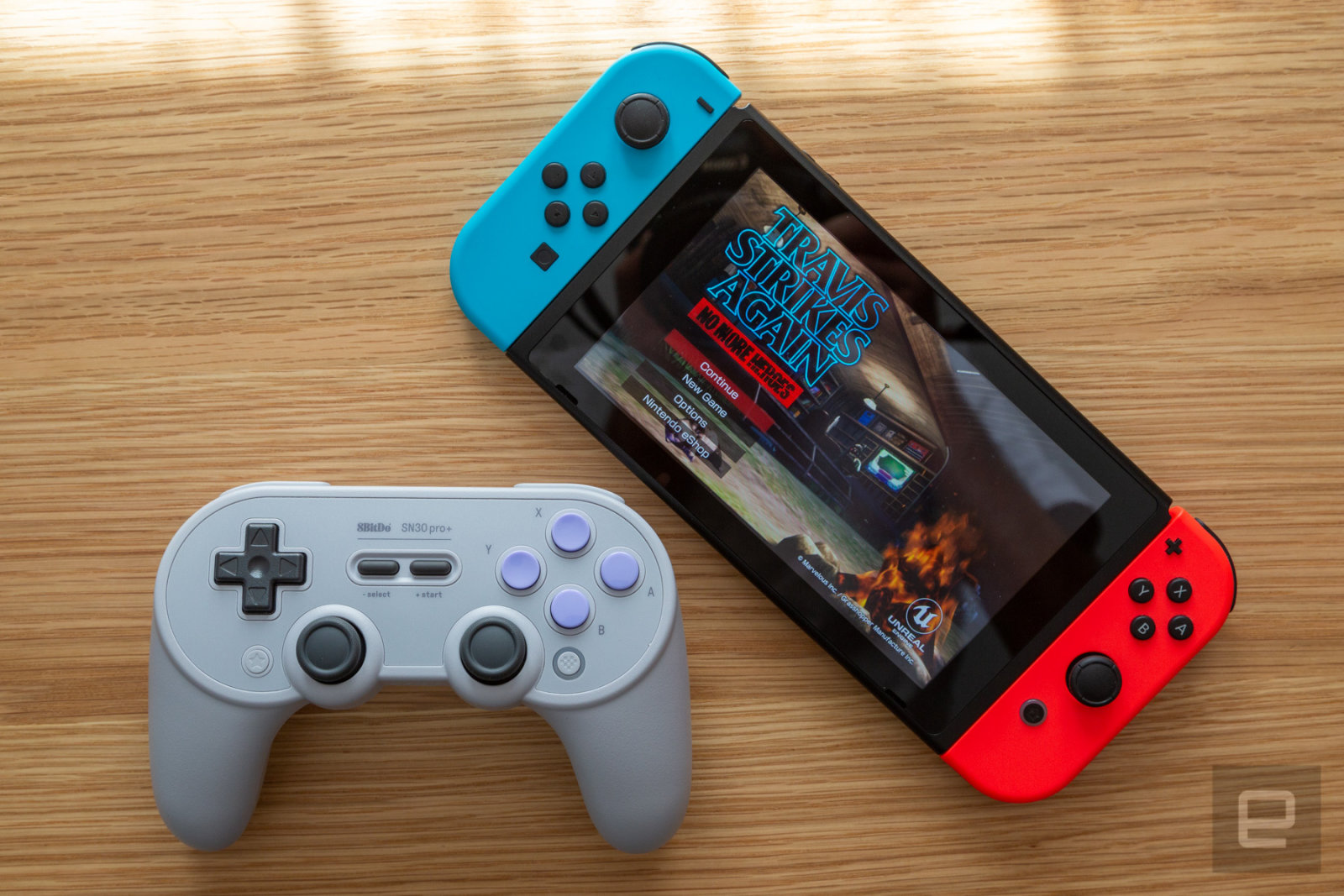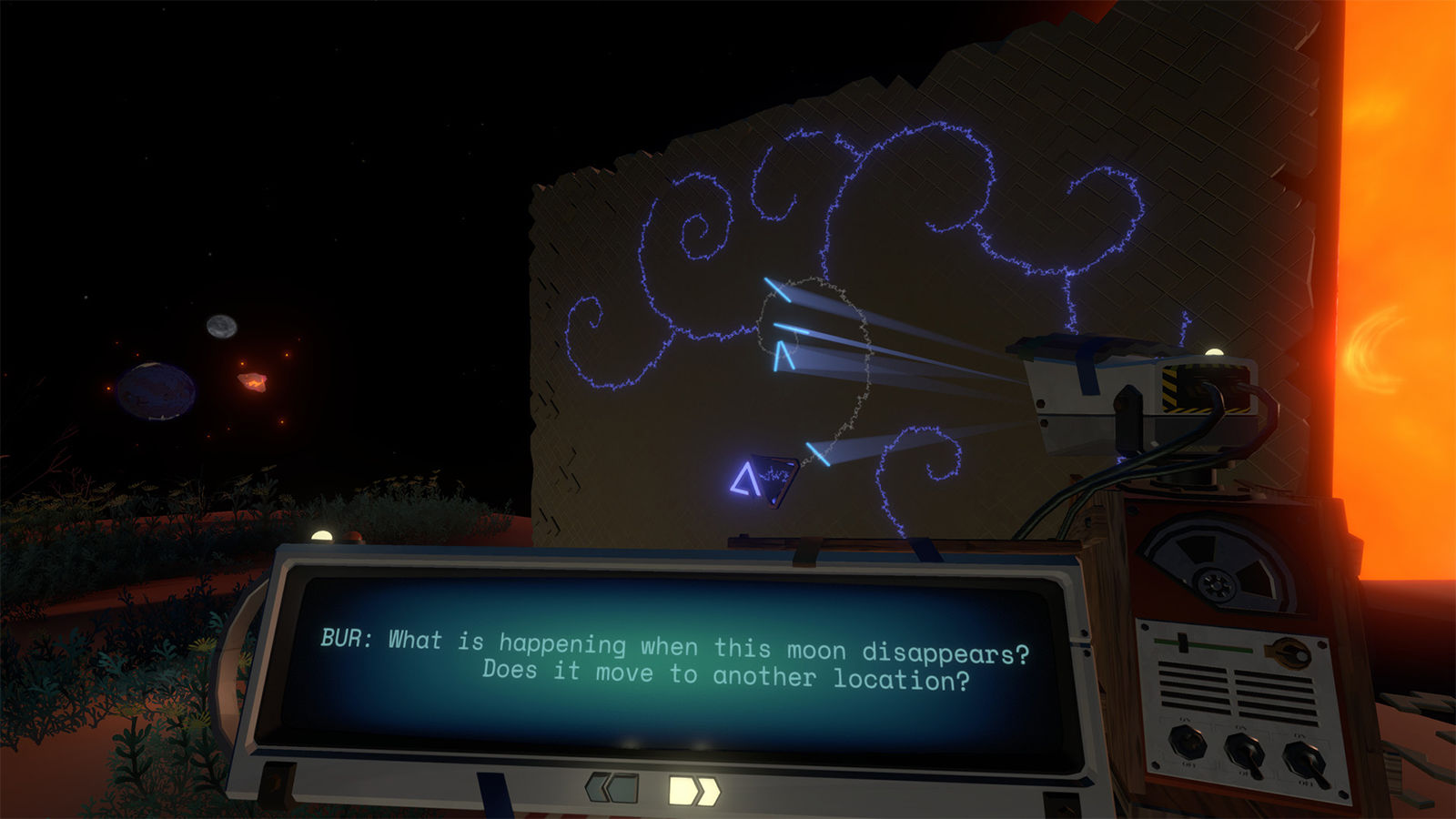
Outer Wilds
Devindra Hardawar
Senior Editor
You wake up by a campfire, staring at a night sky teeming with celestial activity. A green moon (or is it a planet?) is in the distance, a ship slowly disintegrates in space. The solar system seems vast, beautiful and dangerous all at the same time. That’s your introduction to Outer Wilds, Mobius Digital’s latest title that evokes the awe and terror of space exploration — it’s like 2001 meets Myst. You’re an astronaut who wakes up in a small village on an Earth-like planet. Everything seems peaceful as you explore the area, looking for your ship’s launch codes. Then, the sun goes supernova, every fiber of your being is reduced to space dust, and you wake up once more, right beside that campfire. 22 minutes later, it all happens again.
Turns out, you’re stuck in a time loop. And you’re the only person who can prevent the sun from exploding and wiping out your lovely little solar system. Luckily, you don’t lose your memories between sessions, so, like Groundhog Day and Edge of Tomorrow (with a dash of Majora’s Mask), your only choice is to die repeatedly until you solve the mystery.
While there’s been a resurgence of slower, narrative-based games lately, like Firewatch and Gone Home, Outer Wilds isn’t just a linear story. You can explore your solar system freely — the game just gives you a few location hints to get started. That’s its true magic: You pick a point in space, travel to it and hope it doesn’t kill you before you can gather some decent intel. Along the way, you’ll encounter some of the wildest celestial bodies you’ve ever seen: a planet smashed open with something impossible in its core, another with a massive ocean and huge cyclones that throw you back into space.
Outer Wilds is a game that demands patience and an adventurous spirit. It rarely holds your hand, and on many occasions, you’ll find yourself dying just as you’re on the cusp of a great discovery. But it promises adventure like nothing else this year. It’s practically the perfect game for Xbox Game Pass — it’s harder to sell players on unique new narrative experiences when they have to pay full price for them. But as part of a subscription service, there’s no reason not to give it a shot.

Gris
Marc DeAngelis
Contributing Writer
Editor’s note: Gris was released at the end of last year, but after our deadline for the best games of 2018, so we’re including it here.
Despite its promises of unrestrained creativity and artistry — as well as my penchant for DIY and independent media — the indie gaming scene never appealed to me, save for a few titles like Fez and Braid. But then came Gris, which combines relatively easy platforming, puzzle solving and startlingly beautiful visuals to form an experience that fluctuates between hypnotically relaxing and intensely dramatic. While it may not be much of a challenge, it’s an absolute pleasure to play.
Gris initially grabbed my attention because one of my favorite artists, Conrad Roset, was its art director. Roset is a Spanish painter and illustrator who specializes in watercolor and ink portraits. He makes frequent use of the stark contrast between black ink and light paper or wood panels, and his minimalist splashes of color and intense brush strokes add a signature touch to his work. Prior to Gris, his most well-known work was a long-standing series of portraits called Muses. Roset borrowed from that project’s style to design the game’s main character, who has a mesmerizing hair style and a dress that undulates with the wind. His impressionist leanings also inform the terrain in which the game takes place — deserts, oceans, forests and city ruins — as well as the creatures that inhabit it.
As the player, your task is to collect orbs of light that grant the main character shape-shifting abilities. As she acquires more powers, she’s able to reveal new pathways and progress through the game. But Gris isn’t just about double-jumping and collecting items; giant, inky birds serve as boss battles — or rather, chases — and a bit of nightmare fuel. You can complete the whole game in about three hours, and it’s easy enough for a non-gamer to play.
Gris makes me wish the video game industry featured more artists who have trained in and mastered traditional media. Games absolutely need skilled character designers and background artists. But they also need art direction that steps outside of stereotypes derived from cartoons and anime. Hopefully the success of Gris is an indication that there’s an appetite for such a thing.
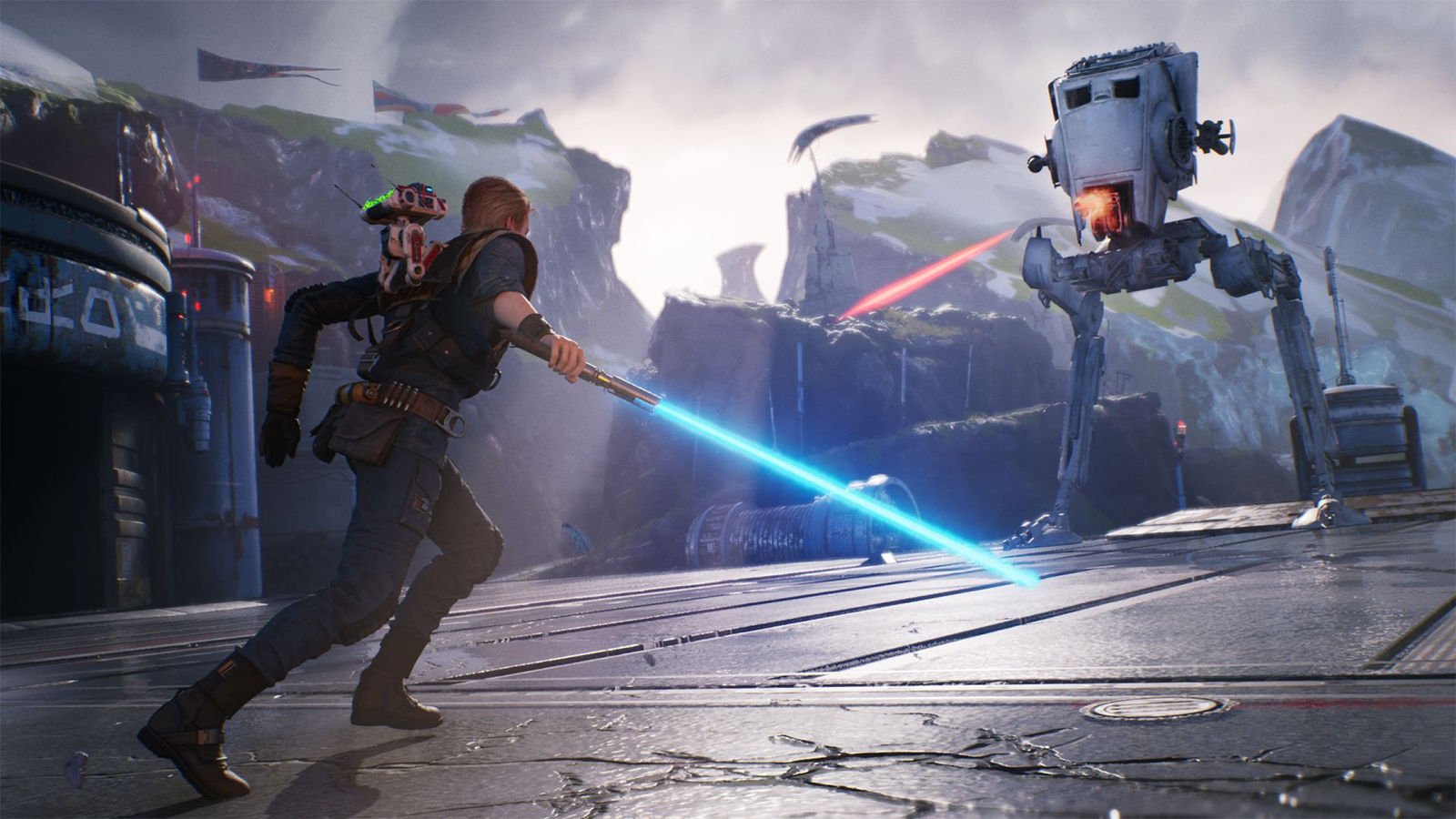
Star Wars Jedi: Fallen Order
Andrew Tarantola
Senior Editor
Star Wars video games have held a special place in my heart for decades. One of my first and fondest gaming memories involved running amok through a Jawa Sandcrawler as Chewbacca in Super Star Wars for the SNES. The same was true with Knights of the Old Republic for the original Xbox — I mean, it gave us HK47 and the “meatbag” reference. Heck, 2004’s Battlefront to this day remains among my favorite games from that era. But with the insidious intrusion of microtransactions, LEGO-branded tie-ins and online-only play in recent years, I feared that Fallen Order would similarly fall to the Dark Side. Happily, I was as wrong about EA’s latest Star Wars game as those pint-sized desert scavengers who, all those years ago, thought they could take on my 8-foot tall space Sasquatch armed with a plasma rifle.
Star Wars Jedi: Fallen Order is phenomenally fun. The story takes place after the Great Purge and you play as Cal Kestis, a former Jedi Padawan hiding out on a backwater planet, who is thrust into a life-or-death quest spanning the length and breadth of the entire galaxy. And while Cal himself has about as much charisma and gravitas as an MSE-6 droid at the start of the adventure, his growth throughout the story and eventual acceptance of his duty and fate as a Jedi is some top-notch space opera.
You’ll swing, climb, jump and clamor across the faces of five planets, battling myriad hostile fauna, Imperial Troopers and droids along the way. That Cal is essentially limited to short range melee attacks while his enemies can rain blaster bolts upon him from halfway across the map only adds to the challenging combat calculus. I especially enjoyed the Metroid-esque exploration mechanics wherein you routinely return to previous planets to uncover new secrets and raid hidden stashes as you gain new powers.
My favorite aspect is the game’s loot and character progression. None of the items are actually required in your first playthrough: crates, Force Echos, the whole shebang. You can play straight through the game, collect virtually nothing along the way and still arrive at the end with your stats maxed. There are no secret super weapons to acquire before facing the final boss, no grinding needed to unlock new powers and no nerf-herding pop-up screens demanding you fork over credits for stat boosts. There’s nothing to buy. Outside of the occasional Stim crate (which increases your health regen capability) none of the stuff you find in the crates will even help you in your quest. Namely because all you can find are skins — for customizing Cal’s outfit, lightsaber, ship and even his robotic companion BD-1.
Fallen Order isn’t just what I’ve been looking for in a Star Wars game, it’s what I’ve been looking for in a single-player adventure title since Horizon: Zero Dawn came out. Between the deeply developed universe the story is set in, the varied and challenging combat scenarios and the fact that EA wasn’t continually reaching for my wallet, Fallen Order is my 2019 Game of the Year.
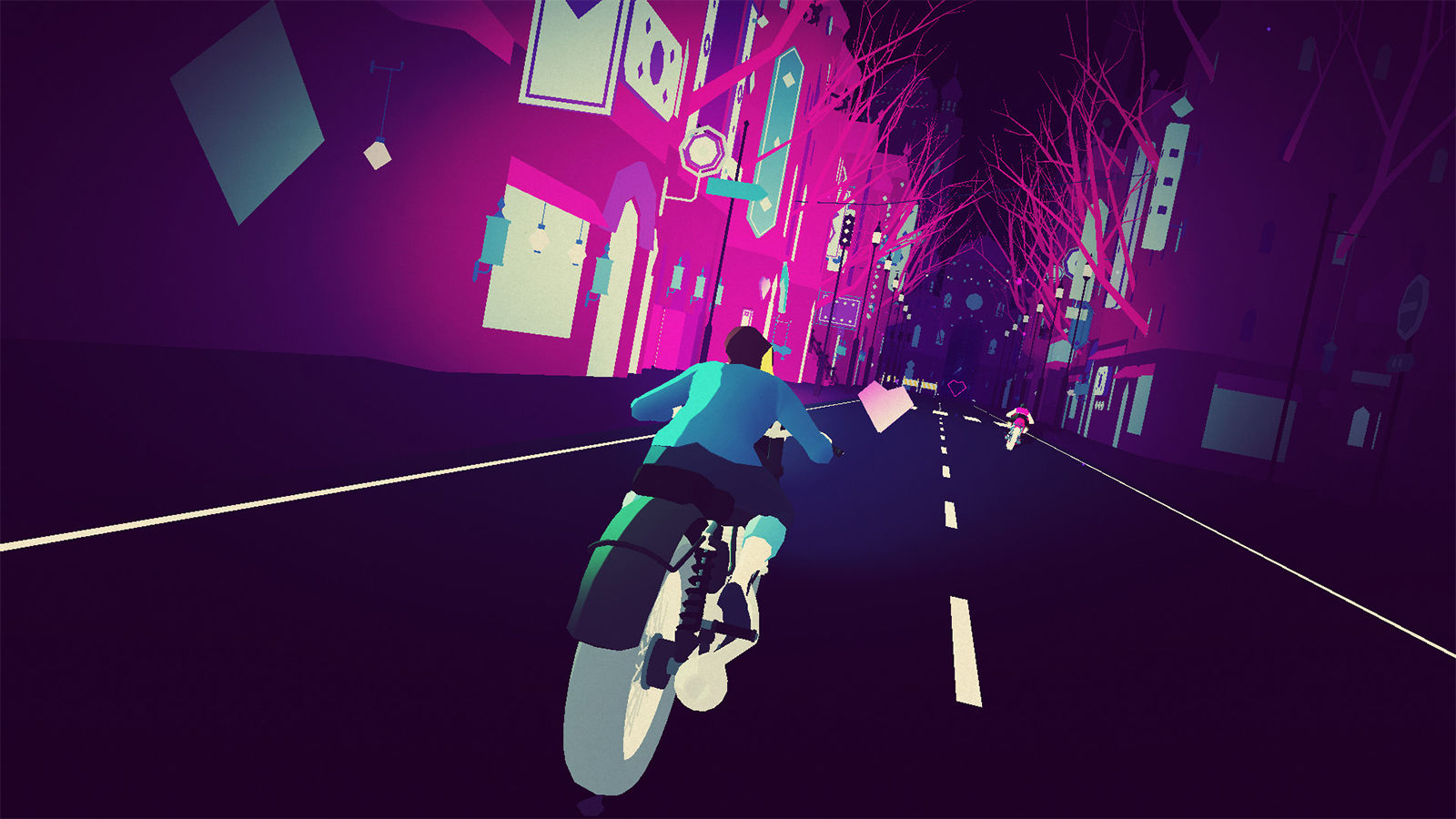
Sayonara Wild Hearts
Kris Holt
Contributing Writer
Sayonara Wild Hearts won me over before I even finished the first stage. It’s a stunning, fast-paced adventure about a woman’s attempt to restore balance to herself (and the universe) after she suffers heartbreak.
Much of the joy I get from Sayonara Wild Hearts is in having to quickly adapt to the frequent gameplay shifts. One second, you’re dodging traffic and collecting hearts on a motorcycle; the next, you’re in a sword fight. You’ll be on your toes the entire time, but describing the mechanics too much would ruin a big chunk of the fun.
That said, it’s much more about the overall experience than any of the neat gameplay ideas on display. There’s an option to skip sections you find tricky (not that I did), and it feels like developer Simogo is determined to help you reach the emotional denouement.
And then there’s the soundtrack: Each of the mostly short stages has its own techno-pop tune I just can’t get enough of. SWH has only been out for a few months, and its songs dominated the list of my most-listened to tracks on Apple Music this year.
The care and creativity that Simogo infused into Sayonara Wild Hearts is palpable and infectious. It’s part rhythm game, part shooter, part arcade racer and a dozen other things in between. It’s a gorgeous, achingly cool ode to pop music and love that’s an utter delight to play — even if it is about repairing a broken heart.
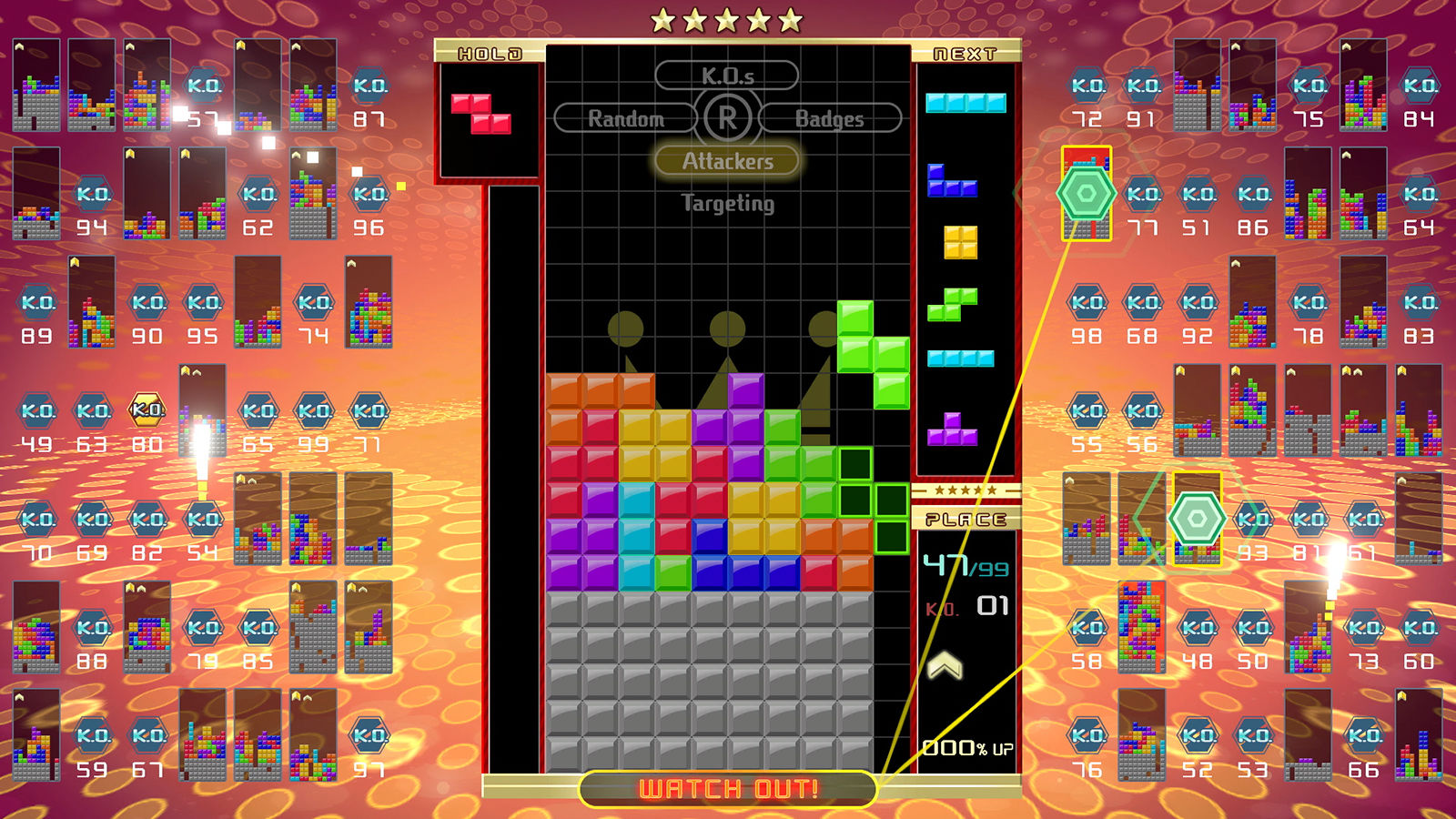
Tetris 99
Ian Levenstein
Database Editor
When Nintendo announced the impending arrival of Nintendo Switch Online last year, it looked like its selection would be sparse. Outside of the ability to play your Switch games online and some classic Nintendo games like Super Mario Bros. 3, Legend of Zelda and Dr. Mario, the idea of Switch Online exclusive titles wasn’t broached at all. I wasn’t thrilled, as pretty much all of the classics had been available at least 10 times before in multiple forms and formats. Then, in February 2019, with almost no warning, Nintendo announced Tetris 99 would be available… today. I didn’t think a new version of Tetris (of all things) would make my $19.99 a year worth it. But boy was I wrong.
Tetris 99 is the most addictive game I have played in years. The basic concept is brilliant: turn Tetris, the single player puzzle title most of us have been playing since the Game Boy, into an online multiplayer battle royale against 98 other competitors. The first few times I played Tetris 99, I got hammered because I was too focused on my own game. I was clearing bricks line by line, forgetting the fact that there were other players playing alongside me. Once you start building up five or six rows at a time and then finishing them off with a perfectly placed piece is when the action gets good. But you also can’t focus too much on the rest of the pack, or you’ll manage to misplace a key block, and then it’s game over.
You start playing and, before you know it, at least an hour has passed by (and sometimes two or three). While I am far from a veteran Tetris player, I take pride in making it to the Top 5 at least a few times over the past few months, and I have bitten-down nails to prove it. When the game speeds up, it becomes very difficult to keep apace. The game also made me appreciate my purchase of an 8Bitdo N30 Pro early into the lifecycle of the Nintendo Switch, as Nintendo’s Pro Controller has a D-pad that is much more prone to slippage, and slippage means misplaced pieces.
Regular tournaments themed around new Switch releases, like Mario Maker or Pokémon Sword and Shield keep the look of the game interesting, and completing daily missions lets you collect tickets that you can use to unlock new themes, including one that looks just like Tetris on the Game Boy. There’s also Marathon Tetris, the Big Block DLC that adds multiple CPU modes and Local Arena for playing with up to eight of your friends. Whether you choose to buy these modes or not, I feel the standard online play and Team Battle are more than enough to keep you interested and occupied for a long time to come. I certainly haven’t stopped playing it yet, and don’t plan to anytime soon, even as other Switch games sit there calling my name. I’ll get to them soon, I swear, after I play five more rounds. Okay, ten more rounds. Maybe fifteen.
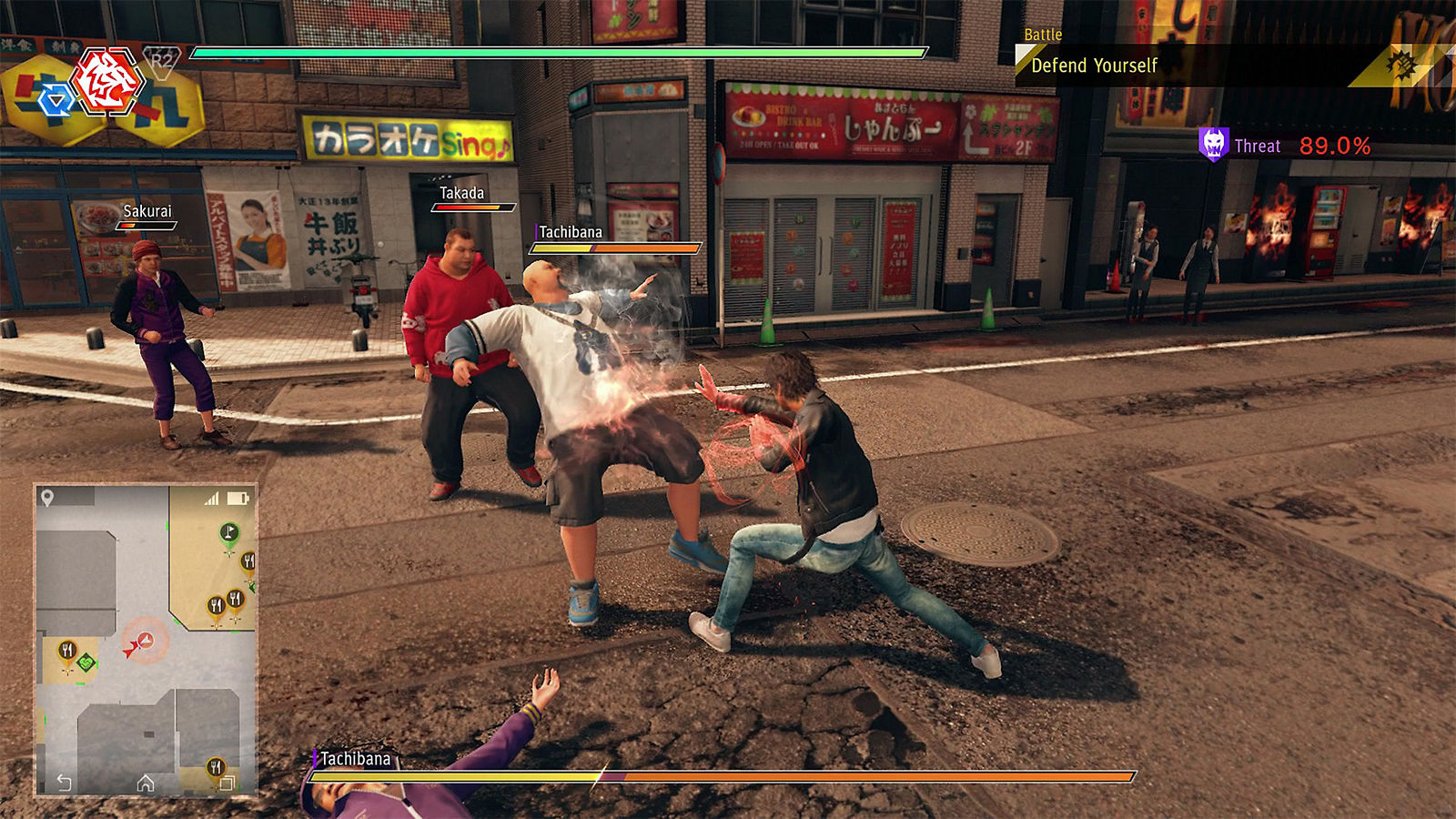
Judgment
Nick Summers
Senior Editor
I love the Yakuza franchise, but after seven mainline entries and a handful of excellent remasters, I needed a break. Evidently, Japanese developer Ryu ga Gotoku (RGG) Studio felt the same way, which is why it made the detective-themed Judgment (titled Judge Eyes in Japan) before moving on to Yakuza: Like a Dragon. Surprisingly, Judgment isn’t a huge departure from the proven and largely beloved Yakuza formula. The game is still set in Kamurocho and the murder-filled mystery features plenty of Japanese crime lords. The hero, though — a lawyer-turned-private detective called Takayuki Yagami — and his crime-solving techniques change the experience in small but welcome ways.
He will often tail suspects to find out who they’re working with or the location of a case-critical hideout. Some targets will also spot Yagami and flee, forcing the leather jacket-wearing hero to give chase in a simplistic, auto-runner-inspired pursuit. There are quieter moments, too, that shift the game into a first-person perspective and force you to scour the environment for clues. It’s not the most challenging task — move the camera enough and Yagami will highlight everything of interest — but it’s a welcome break from the bombastic fisticuffs combat.
The best part of Judgment, though, is its story. Yagami’s quest to find “the mole,” an apparent assassin that claws at its enemies and then burrows back into the darkness, is a captivating journey filled with twists that are surprising, logical and satisfying. It’s broken into 13 chapters that feel like episodes of a prestige series on HBO or Netflix. There’s even an opening sequence that feels like a mashup of Naruto and True Detective. I’ve never had a problem with Yakuza’s writing — some of the games have brilliant stories, actually — but Judgment takes RGG Studio’s narrative chops to a new high.
If you fancy a break from the central mystery, Kamurocho has plenty of optional side-missions to tackle. Like the Yakuza series, they’re often zany and surprisingly heart-warming — a subtle reminder that Yagami’s story, while thrilling, is only one of many taking place across the city. There’s also a slew of stores and restaurants to explore, as well as various mini-games to master including shogi (Japanese chess), drone racing and a VR-powered board game. I won’t claim that Judgment is the undeniable Game of 2019, but it’s the one I’ve had the most fun with this year. If you own a PS4, it’s well worth delving into over the holiday.
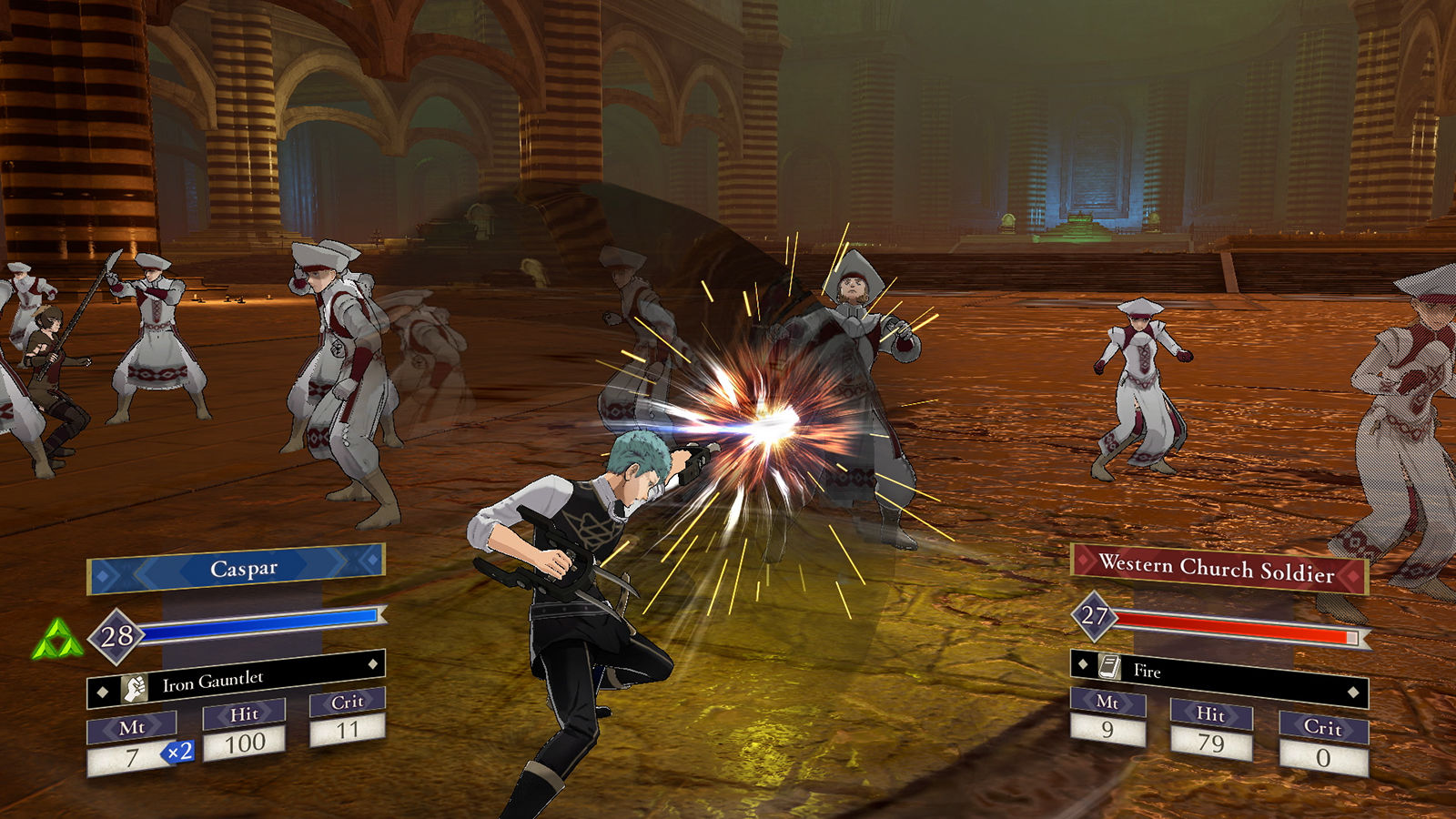
Fire Emblem: Three Houses
Mariella Moon
Associate Editor
I knew from the moment Fire Emblem: Three Houses was announced that I was going to buy a Switch for it. I’ve played almost every DS and 3DS game in the franchise, and there was no way I’d miss its latest entry. However, while I loved and enjoyed each and every one of them, a big part of why I play Fire Emblem games is to fill the Suikoden-shaped hole in my heart — and Three Houses came the closest to patching it up.
Suikoden, a Japanese RPG series by Konami, features turn-based and strategy combat that’s very similar to Fire Emblem’s. Suikoden 2 was the first game I played in the series, and I fell in love with its complex characters, rich lore and plot, which made me ponder the atrocities of war and morality of “the end justifies the means” as a young teen. Unfortunately, with Konami’s decision to focus on mobile and pachinko games, we’ll likely never see another entry: Suikoden V, the last game in the series, was released way back in 2006.
That brings us back to Fire Emblem. While I enjoyed the new mechanics introduced in Awakening and spent 300 hours playing Fates — half of which I genuinely enjoyed and half of which I spent mindlessly grinding — neither was truly able to scratch that Suikoden itch. Three Houses did, however, probably because it features more traditional RPG elements than its predecessors.
It has more specific similarities, as well. Like in Suikoden, you can explore your base and recruit characters outside the battlefield by fulfilling certain conditions. The Battalions in the game, a new feature introduced in Three Houses, also use attacks and formations similar to Suikoden’s war units for its strategy battles.
Don’t get me wrong: I’d still pick Three Houses as my favorite game for 2019 even if I wasn’t a desperate Suikoden fan. It has an engaging storyline and what I find to be the most memorable cast of characters in Fire Emblem. While things tend to get repetitive in the first half, it still has good replay value, especially considering that it’s sold and packaged as a single game. Fates, if you’ll recall, was sold as three separate games. The fact that it brings back memories of a series I grew up playing, however, gave me an instant emotional connection to it and amped up my enjoyment.
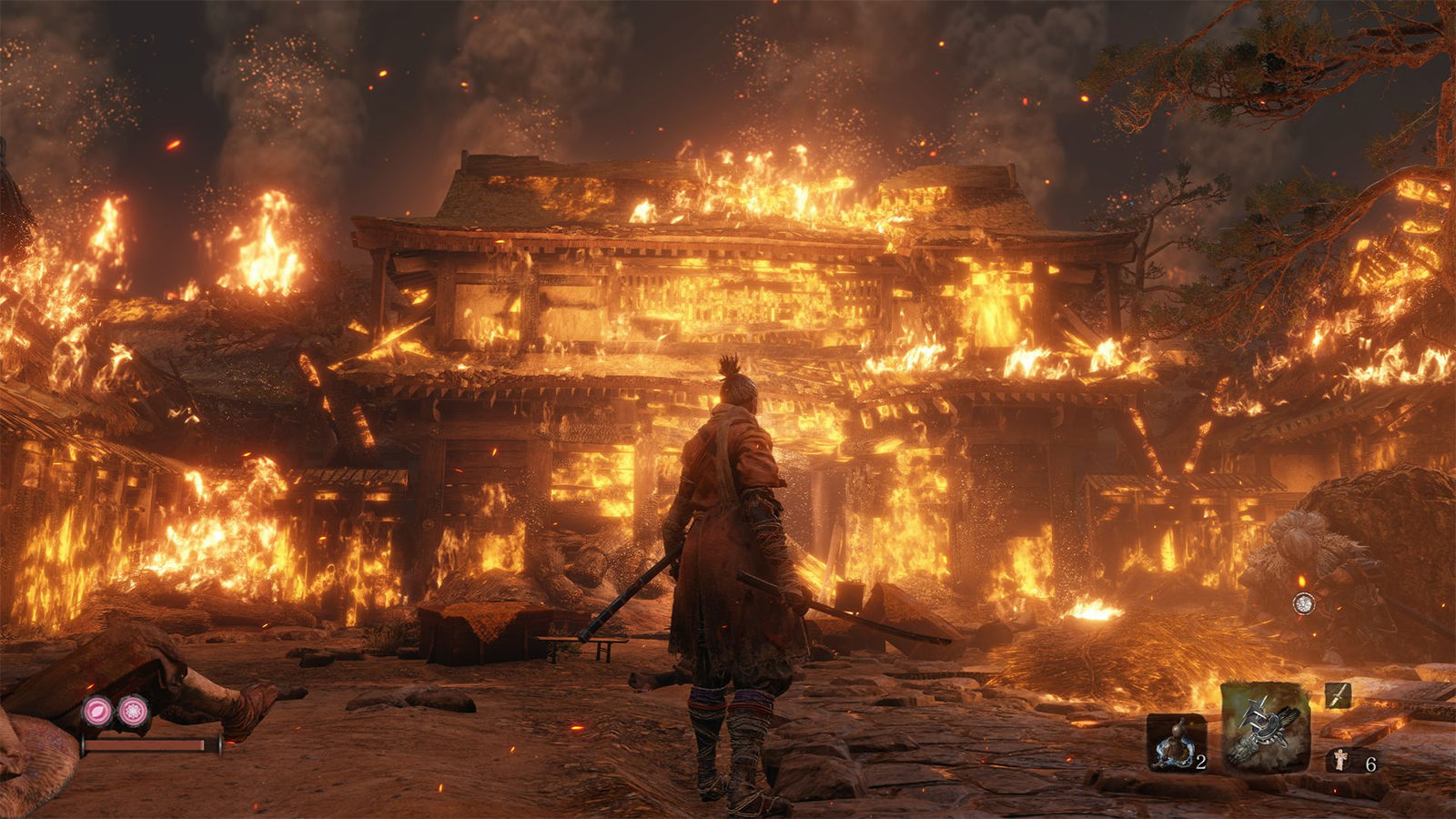
Sekiro: Shadows Die Twice
Igor Bonifacic
Contributing Writer
There’s a moment in Sekiro: Shadows Die Twice that comes at a different point for everyone who plays it. It’s the instant where the game’s combat mechanics finally click. You forget whatever you may have learned in the FromSoftware’s past titles like Dark Souls and Bloodborne, and approach Sekiro on its own terms.
For me, that moment came when I finally beat one of Sekiro’s early bosses, a fearsome samurai lord named Genichiro Ashina. It took me the better part of two days to take him down, but when I did, I felt like I had climbed a mountain.
A lot of games set out and accomplish the same things as Sekiro. But not as easily or confidently. That sense of accomplishment you get when you master a game’s systems is something FromSoftware has built its reputation on. It’s one of the reasons so many people love the studio’s games. And yet how Sekiro delivers that moment feels different than any other From game in the past decade.
Not only is the gameplay different, but the narrative stakes are also plainly laid out. You’re attempting to save the ward and adoptive son of the game’s protagonist. It feels personal and human. It’s a small thing, but it’s the humanity of Sekiro that resonated with me and made it one of the most enjoyable games I have played this year.
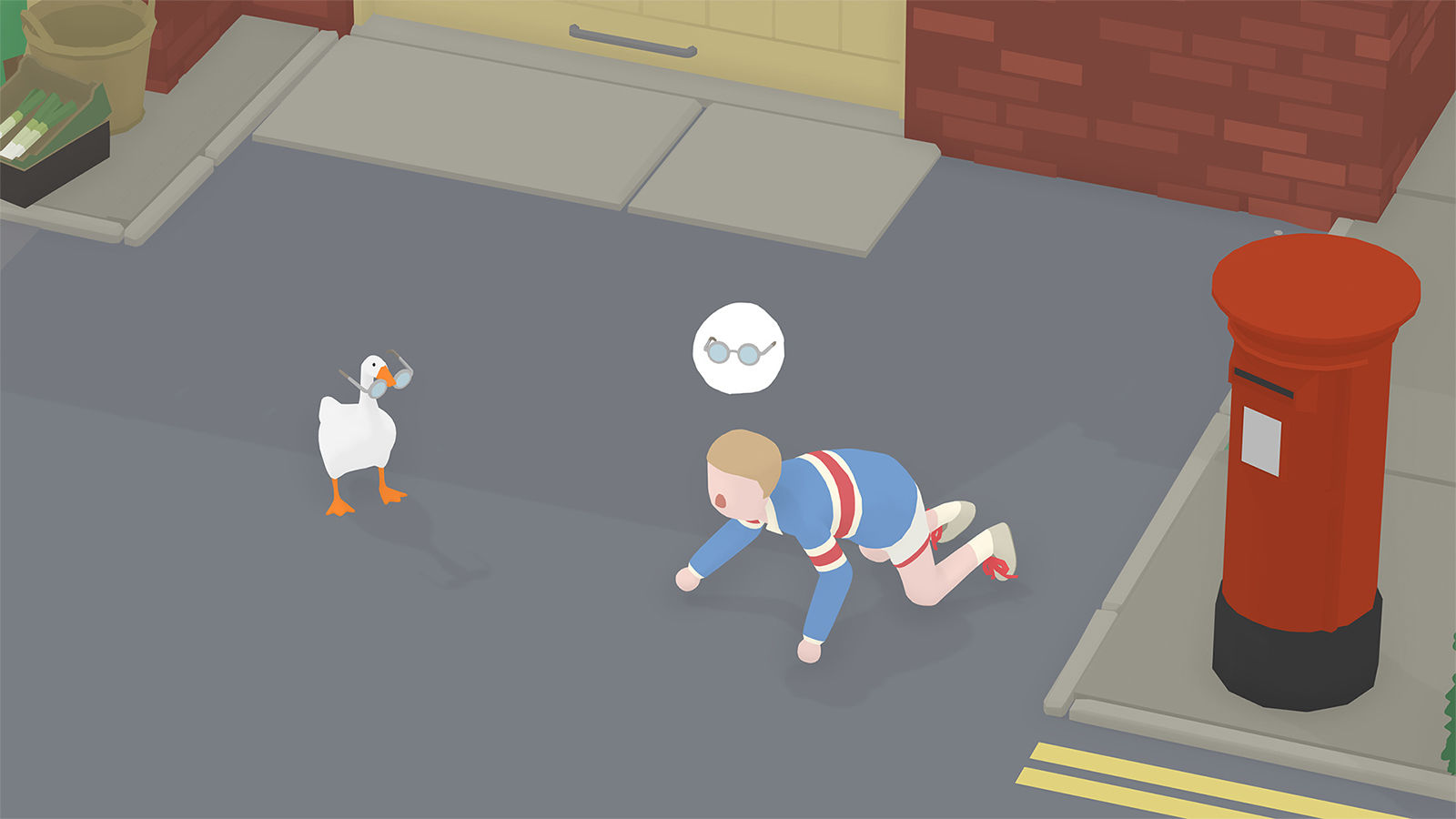
Untitled Goose Game
Kris Naudus
Buyer’s Guide Editor
Okay, let’s get this out of the way: HONK. HONK HONK HONK. :flaps wings, steals your glasses:
Untitled Goose Game is more than just a game, it’s a genuine phenomenon. Even if you haven’t played it, you’ve probably encountered one of the many memes and think pieces that have been posted in the wake of its release. It’s the breakout hit of 2019. But is it a good game?
HONK. (Yes.)
The graphics aren’t flashy, the music is just Debussy and the goose handles like a dump truck. But all of these things combine into a package exceedingly charming and joyful. Maliciously joyful, anyway. One of the appeals of the game is how absolutely simple and universal the concept is: Geese are assholes. We’ve all been terrorized by this large waterfowl at some point or another, so there’s a catharsis in assuming the role of one. “I am the goose now. HONK.”
And it’s actually challenging. Who would have thought that a goose would be the star of a stealth game, but here we are. It’s also achingly self-aware of what type of game it is, which is why at one point you will need to hide in a box. HONK.
Then there’s the ending. Bet you didn’t think you could be surprised by a game where your objective is to do things like steal slippers and dress up statues, but anything that gets me slapping my forehead and exclaiming “of course” will stick in my memory and my heart for years.
HONK.
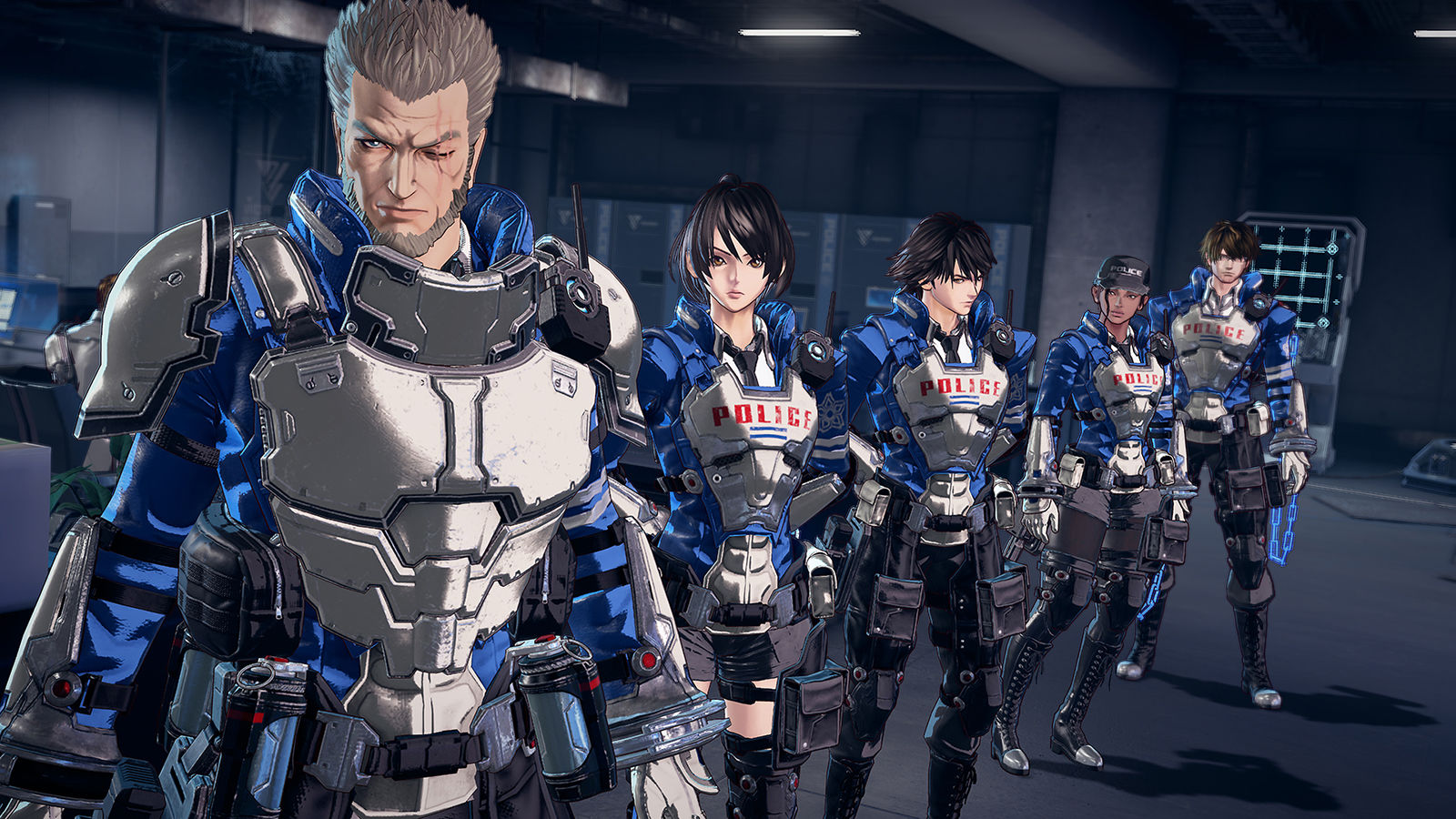
Astral Chain
Aaron Souppouris
Executive Editor
Fire Emblem: Three Houses is the best game of the year. But a colleague has already written about that, so I’m going to pick another favorite: PlatinumGames’ Astral Chain. I was on the fence about it from the day the first trailer came out until a few hours into my playthrough. It all felt a little too obvious, almost a paint-by-numbers rendition of a PlatinumGames title. I needn’t have been so worried: It’s mechanically one of the more original games to come from the developer in recent years.
In a future where humanity is under threat from creatures called Chimera, you play as an officer in a special task force established to deal with other-worldly attacks. You’ll investigate disturbances and then enter the astral plane to fight various beasts. Through the course of the game, you’ll tame a number of special Chimera, and then be able to summon them to fight for you. Encounters play out with you simultaneously controlling both your character and the Legion to deal with waves of mobs and larger, more challenging enemies. You’re bound to your Legion by a leash (or an astral chain), which you can also use to bind enemies. You’ll also need to use your Legion(s) to solve crimes, traverse environments and work around obstacles, as each has a unique trait, such as the ability to move large objects, track scents or fire arrows.
I’ve heard a bunch of people say that Astral Chain looks generic, and while it does lean heavily into a specific anime-inspired 3D style we’ve seen from a lot of Japanese games over the past decade, the characters and environments felt unique to me. If anything, the “future cop” aesthetic brought to mind ’90s titles like Burning Rangers more than contemporary games. (I’d like to take this opportunity to apologize for incessantly pitching my colleagues on a Burning Rangers reboot for weeks after Astral Chain was released.)
Astral Chain sticks closely to a loop of detective work, platforming puzzles and combat — a little too closely if I’m being critical — with the game split into cases that serve as chapters. The story starts off well enough but quickly devolves into a mashup of various anime tropes, including several story beats ripped straight from Neon Genesis Evangelion. It’s the minute-to-minute gameplay that kept me coming back: The combat is engaging and dynamic enough to see you through the (20-hour or so) campaign and beyond. There’s also a ranking system and some challenging end-game content to keep you occupied.
Does Astral Chain reach the heights of Nier: Automata, the last PlatinumGames title I chose for game of the year? No, not at all, but its combat and environments often surpass that game, which is probably my favorite of this generation. I’m not sure it’ll go down in history as one of the greats, but even in a year with updates to my favorite series (Fire Emblem and Pokémon) and a remake of one of my most-loved games (Link’s Awakening), Astral Chain still stood out.

- The best gadgets of 2019
- Spotify’s podcast power play
- Our favorite games of 2019
- Tuesday 24th: Streaming won’t get cheaper or easier
- Tuesday 24th: 2020 is VR’s make-or-break year
- Wednesday 25th: The Big Picture
- Wednesday 25th: Hitting the books
- Wednesday 25th: The best user reviews of 2019
- Thursday 26th: How Twitch lost its grip on game streaming
- Thursday 26th: The worst gadgets of 2019
- Friday 27th: Apple started giving people what they want
- Friday 27th: 2019 was the year tech CEOs lost their luster
- Saturday 28th: This wasn’t the year of foldables after all
- Sunday 29th: The calm before the EV storm
- Monday 30th: Google’s best phone in 2019 was its cheapest
- Monday 30th: Gaming in 2009 versus 2019
- Tuesday 31st: The year in cameras
- Tuesday 31st: Tech that defined the decade















